Simbabwe |
|
|
|
| Übersicht – Contents: | |
Diese Seite ist Teil des Projektes
Simbabwe |
|
|
|
| Übersicht – Contents: | |
Flagge – Flag: |
|
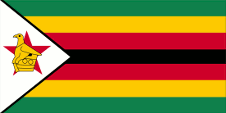 |
Nationalflagge – national flag, Seitenverhältnis – ratio = 1:2, Quelle/Source, nach/by: Flags of the World, Corel Draw 4   |
historische Flaggen – historical Flags: |
|
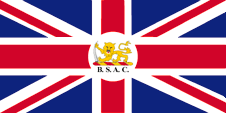 |
1892–1923, Flagge der Britisch-Südafrikanischen Gesellschaft – flag of the British South Africa Company, Seitenverhältnis – ratio = 1:2, Quelle/Source, nach/by: Flags of the World   |
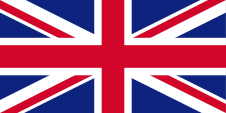 |
1923–1965, Union Flag → quasi Nationalflagge, |
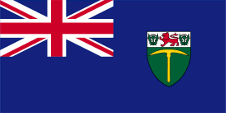 |
1923–1953, Südrhodesien – Southern Rhodesia, Flagge der Regierung (Staatsflagge) – flag of the government (state flag), Seitenverhältnis – ratio = 1:2, Quelle/Source, nach/by: Flags of the World   |
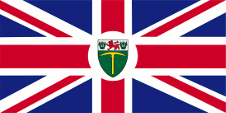 |
1924–1951, Südrhodesien – Southern Rhodesia, Flagge des Gouverneurs – flag of the Governor, Seitenverhältnis – ratio = 1:2, Quelle/Source, nach/by: Flags of the World   |
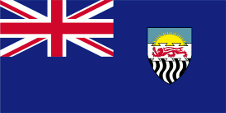 |
1953–1963, Föderation Rhodesien und Njassaland, Flagge der Regierung (Staatsflagge) – flag of the government (state flag), Seitenverhältnis – ratio = 1:2, Quelle/Source, nach/by: Flags of the World   |
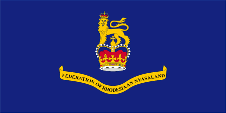 |
1953–1963, Föderation Rhodesien und Njassaland, Flagge des Generalgouverneurs – flag of the Governor General, Seitenverhältnis – ratio = 1:2, Quelle/Source, nach/by: Flags of the World   |
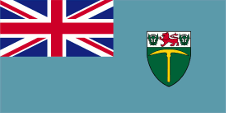 |
1964–1968, Südrhodesien – Southern Rhodesia, Nationalflagge – national flag, Seitenverhältnis – ratio = 1:2, Quelle/Source, nach/by: Flags of the World   |
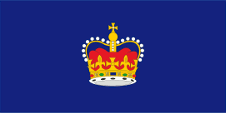 |
1951–1970, Südrhodesien – Southern Rhodesia, Flagge des Gouverneurs – flag of the Governor, Seitenverhältnis – ratio = 1:2, Quelle/Source, nach/by: Flags of the World   |
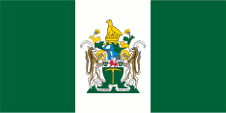 |
1968-1979, Rhodesien – Rhodesia, Nationalflagge – national flag, Seitenverhältnis – ratio = 1:2, Quelle/Source, nach/by: Flags of the World    |
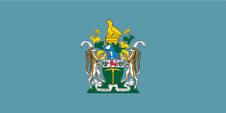 |
1970-1979, Rhodesien – Rhodesia, Flagge des Präsidenten – flag of the President, Seitenverhältnis – ratio = 1:2, Quelle/Source, nach/by: Flags of the World   |
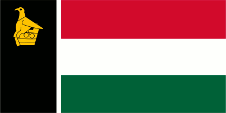 |
1979, Simbabwe Rhodesien – Zimbabwe Rhodesia, Nationalflagge – national flag, Seitenverhältnis – ratio = 1:2, Quelle/Source, nach/by: Flags of the World   |
 |
12.12.1979–18.04.1980, |
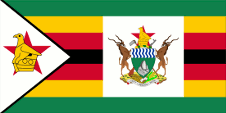 |
1981–1986, Simbabwe – Zimbabwe, Flagge des Präsidenten – flag of the President, Seitenverhältnis – ratio = 1:2, Quelle/Source, nach/by: Flags of the World   |
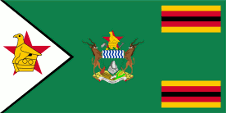 |
1987–1991, Simbabwe – Zimbabwe, Flagge des Präsidenten – flag of the President, Seitenverhältnis – ratio = 1:2, Quelle/Source, nach/by: Flags of the World   |
| Die heutige Flagge von Simbabwe wurde am 18.04.1980 eingeführt. Sie zeigt sieben schmale waagerechte Streifen in Grün, Gelb, Rot, Schwarz, Rot, Gelb und Grün, und hat am Mast ein weißes, schwarzgerändertes Dreieck mit einem gelbem (goldenen) Vogel auf einem rotem Stern in der Mitte. Die Gestaltung der Flagge geht auf das Design der Flagge der ZANU-Partei zurück, die aus konzentrischen Feldern von außen nach innen in den Farben Grün, Gelb, Rot und Schwarz besteht. | The
today’s flag of Zimbabwe was introduced on 18th of April in 1980. It shows
seven narrow horizontal stripes in green, yellow, red, black, red, yellow
and green, and on the pole a white, black-bordered triangle with a yellow
(golden) bird on a red star in the middle. The designing of the flag has its roots in the design of the flag of the ZANU-Party, which consists of concentric fields in the colours green, yellow, red and black from outside to inside. |
| Weiß steht für den Frieden, den die schwarze Regierung mit der weißen Minderheit früher anstrebte. Rot, Gelb und Grün sind die panafrikanischen Farben, und das Schwarz deutet auf die schwarze Mehrheit des Volkes hin. Der rote Stern steht für Internationalismus und Sozialismus. | White
stands for the peace which the black government formerly aimed for with the
white minority. Red, yellow and green are the Panafrican Colours, and the black points out to the black majority within the nation. The red star stands for internationalism and socialism. |
|
Die Farben der heutigen Flagge sind am 18.04.1980 von der Southern African
Vexillological Assosiation protokolliert worden, und zwar: Rot = Pantone
185, Gelb = Pantone 123 und Grün = Pantone 348. In den Jahren davor waren die Farben der Flaggen den üblichen britischen Festlegungen unterworfen, z.B. Rot = Pantone 186, Blau = Pantone 280, Azurblau = Pantone 549 und Grün = Pantone 357. |
The colours of the
present flag were summarised by the Southern African Vexillological
Assosiation on 18th of April in 1980, namely: Red = Pantone 185, Yellow =
Pantone 123 and Green = Pantone 348. In the years prior to this, the colours of the flags were subject to the usual British determinations, e.g. Red = Pantone 186, Blue = Pantone 280, Azure = Pantone 549 and Green = Pantone 357. |
| Grün, Gelb und Rot sind auch als die "Panafrikanischen Farben" bekannt: Etwa 1900 setzte die Panafrika-Bewegung ein, die Gemeinsamkeiten aller Menschen mit schwarzer Hautfarbe hervorheben wollte. Der Farbendreiklang Grün-Gelb-Rot, den viele afrikanische und auch amerikanische Staaten nach Erlangung ihrer Unabhängigkeit in ihre Flaggen übernahmen, steht für die politische Einheit Afrikas, ja aller Schwarzen. Das erste Land war Ghana im Jahr 1957. Als Ursprung gelten die Landesfarben von Athiopien (Abessinien), dem ältesten unabhängigen Staat Afrikas. | Green,
yellow and red are even known as the "Panafrican colors": Perhaps in 1900
was the beginning of the Panafrica-Movement, wich wants to emphasize the
commons of all people with black skin. The colour-triad green-yellow-red,
wich used many african and even american countries in their flags after the
independence, stands for the political unity of Africa, of all black People. The first country was Ghana in 1957. As the origin apply the colours of Ethiopia (Abessinia), the oldest independent state in Africa. |
| Der goldene Vogel wird Simbabwe-Vogel oder auch Blitzvogel genannt. Goldene Abbilder dieses auf einem Podest sitzenden Vogels wurden 1888 in der legendären Ruinenstadt Simbabwe (20 km südöstlich von Fort Victoria) gefunden. Der Simbabwe-Vogel ist seit 1924 Teil der Heraldik Rhodesiens. | The golden bird is called Zimbabwe Bird or even Flash Bird. Golden reproductions of that on an pedestal sitting bird were found in 1888 in the legendary ruin-city of Zimbabwe (20 km southeastern of Fort Victoria). The Zimbabwe Bird is since 1924 a part of the heraldry of Rhodesia. |
| Wenige Jahre nach der Ankunft der Briten wurde das Land 1893 ein Protektorat der Britisch-Südafrikanischen Gesellschaft (BSAC), und bis 1923 wurde deren Flagge verwendet. | A few years after the arrival of the British, the country became a protectorate of the British South Africa Company (BSAC) in 1893, and its flag was used until 1923. |
| Die Flagge der BSAC zeigte den britischen Union Jack mit dem Logo der BSAC in der Mitte der Flagge auf einer weißen Scheibe. Das Logo zeigte einen goldenen Löwen der einen Elefanten-Stoßzahn in seiner rechten Pranke hielt. Er stand auf einem rot-goldenen Wulst. Darunter das Kürzel der Company: B.S.A.C. | The flag
of the BSAC showed the British Union Jack with the emblem of the BSAC in the
middle of the flag on a white disk. The emblem showed a golden lion which held an elephant tusk in its right paw. It stood on a red-golden torus. Below the shortcut of the company: B.S.A.C. |
| Am 01.10.1923 wurde Südrhodesien eine britische Kronkolonie mit eingeschränkter Selbstverwaltung (Dominion), und diese bekam am 11.08.1924 ein eigenes Wappen verliehen. Das Schild des Wappens wurde – wie bei britischen Kolonien manchmal üblich – als Badge in das wehende Ende der blauen britischen Dienstflagge aufgenommen. | On 1st of October 1923 Southern Rhodesia became a British crown colony with limited self-administration (Dominion), and that got awarded on 11th of August 1924 an own coat of arms. The shield of the coat of arms became – like sometimes usual in British colonies – added as badge into the flying end of the blue British official flag. |
| An Land repräsentierten der einzelne Bürger und auch die Behörden ihren Status als Bürger oder Organe der britischen Nation, verkörpert im United Kingdom, durch die Verwendung des Union Jack, dann „Union Flag“ genannt. Zur See war somit für den britischen Bürger die britische Handelsflagge, der Red Ensign (Rote Flagge) vorgesehen. In einigen wenigen Fällen wurde den Bürgern einer Kolonie durch die Admiralität erlaubt, auf See einen eigenen Red Ensign mit dem Badge der Kolonie zu verwenden. Für die Südrhodesien lag eine solche Erlaubnis jedoch nicht vor. |
On land, the individual
citizen and also the authorities represented their status as citizens or
organs of the British nation, embodied in the United Kingdom, through the
use of the Union Jack, then called the "Union Flag". At sea, the British citizen was thus provided with the British merchant flag, the Red Ensign. In a few cases, the citizens of a colony were allowed by the Admiralty to use their own Red Ensign with the colony's badge at sea. However, no such permission was available for Southern Rhodesia. |
Großbritannien hatte in Jahr 1864 ein Flaggensystem eingeführt, in dem:
Seit 1865 durften Schiffe von Kolonialregierungen einen Blue Ensign mit einem Badge (Abzeichen) im fliegenden Ende führen. |
United Kingdom introduced a flag system in 1864 in which:
Since 1865 ships of colonial governments were permitted to fly the Blue Ensign with a badge in the flying end of the flag. |
| Ein solches Badge war oft eine auf einer Scheibe platzierte regionale landschaftliche Darstellung, zeigte oft Schiffe, historische Begebenheiten oder konnte auch nur eine Art Logo sein. Dieses Badge war für Südrhodesien der Wappenschild des 1924 verliehenen Wappens. Es war einfarbig grün mit einer goldenen Hacke darin. Im Schildhaupt ein roter Löwe zwischen zwei Disteln. |
Such a badge was often a regional landscape representation placed on a disk,
often showing ships, historical events or even a kind of a logo. That badge was for Southern Rhodesia the blazon of the in 1924 awarded coat of arms. It was single-coloured green with a golden pickaxe in it. In the head of the shield a red lion between two thistles. |
| Im Jahre
1953 wurde Nordrhodesien mit Südrhodesien und Njassaland zur
Zentralafrikanischen Föderation zusammengeschlossen. Die Föderation hatte eine eigene Flagge, einen Blue Ensign mit dem Wappen der Föderation im fliegenden Ende. Die Föderation wurde 31.12.1963 aufgelöst und Nordrhodesien wurde 24.10.1964 unabhängig. |
In the year 1953 Northern Rodesia became united with Southern Rhodesia and Nyasaland to the Central African Federation. The federation got an own flag, a Blue Ensign with the coat of arms of the federation in the flying end. The federation was dissolved on 31st of December in 1963 and Northern Rodesia became independent on 24th of October in 1964. |
| Bereits im Vorfeld des Zerfalls der Föderation hatte man sich auch in Südrhodesien auf die bevorstehende eigene Unabhängigkeit vorbereitet und schon am 08.04.1964 eine neue Flagge angenommen. Sie zeigte das Bild der Flagge der britischen Kolonie zwischen 1924 und 1953, jedoch wurde das Dunkelblau des Flaggentuchs des Blue Ensign als Zeichen der Unabhängigkeit durch Hellblau ersetzt. | Before the disintegration of the federation they had already prepared for the forthcoming own independence in Southern Rhodesia and already adoped a new flag on 8th of April in 1964. It showed the design of the flag of the British colony between 1924 and 1953 but the dark blue of the bunting in the blue ensign was displaced by pale blue as a sign for the independence. |
| Am 11.11.1968 wurde ein neue Flagge angenommen, welche die Trennung von Großbritannien besser verdeutlichen sollte. Sie zeigte drei vertikale Streifen in Grün, Weiß und Grün und in der Mitte das Staatswappen. Grün stand für die Hoffnung und Weiß für Frieden. | On 11th of November in 1968 was adoped a new flag, which should show clearlyer and better the separation from United Kingdom. It showed three vertical stripes in green, white and green and in the middle the coat of arms. Green stood for the hope and white for peace. |
| Am 01.06.1979 wurde die Republik Simbabwe- Rhodesien proklamiert und am 02.09.1979 eine neue Flagge angenommen. Die Schwarzen waren jetzt an der Regierung beteiligt und die neue Flagge erhielt ein bunteres, afrikanischeres Aussehen. Sie zeigte drei waagerechte Streifen in Rot, Weiß und Grün und am Liek einen etwas breiteren schwarzen Streifen, der durch eine dünne weiße Linie vom Rest der Flagge getrennt war. Im oberen Teil des schwarzen Streifens erschien ein goldener Simbabwe-Vogel. Die Republik Simbabwe-Rhodesien wurde jedoch international nicht anerkannt. | On 1st of
June in 1979 was proclaimed the Republic of Simbabwe-Rhodesia and on the 2nd
of September in 1979 was adoped a new flag. The blacks were now participated
in the government and the new flag got a more colorful and more African
design. It showed three horizontal stripes in red, white and green and on the leech a some broader black stripe which was separated from the rest of the flag by a narrow white line. In the upper part of the black stripe appeared a golden Zimbabwe Bird. But the Republic of Zimbabwe-Rhodesia became internationally not recognized. |
| Am 17.04.1980 wurde dann die Republik Simbabwe proklamiert – die international anerkannt wurde – und am 18.04.1980 wurde die heutige Flagge eingeführt. | On 17th of April in 1980 was then proclaimed the Republic of Zimbabwe – which became internationally recognized – and on 18th of April in 1980 was introduced the today's flag. |
| Quelle/Source: Die Welt der Flaggen, Flaggen und Wappen der Welt, Wikipedia (EN), Flags of the World, Flaggen Wappen Hymnen, SAVA, Volker Preuß | |
Wappen – Coat of Arms: |
|
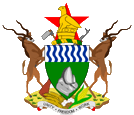 |
Wappen von Simbabwe – coat of arms of Zimbabwe, Quelle/Source: Corel Draw 4 |
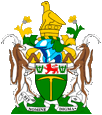 |
1924–1953, 1963–1980, Wappen von Südrhodesien – coat of arms of Southern Rhodesia, Quelle/Source: Corel Draw 4 |
 |
1953–1963, Wappenschild der Föderation Rhodesien und Njassaland – blazon of the Federation of Rhodesia and Nyasaland, Quelle/Source: Flags of the World |
| Das heutige Staatswappen wurde – wie die Flagge – am 18.04.1980 eingeführt. Es zeigt ein grünes Schild mit einer Abbildung der Ruinen der alten Stadt Simbabwe. Im Schildhaupt ein silbernes Feld mit sieben blauen Wellenlinien. Das Grün steht für den natürlichen Reichtum den der fruchtbare Boden des Landes hervor bringen könnte. Die blauen Wellen stehen für das lebenswichtige Wasser. Hinter dem Schild ein Gewehr und eine Hacke. Sie sollen den Übergang vom Kampf zur schaffenden Arbeit darstellen. Oberhalb des Schildes, vor einem roten fünfzackigen Stern, ein golden-grüner Wulst, der für die Bodenschätze und den Naturreichtum steht. Auf dem Wulst ein goldener Simbabwe-Vogel. | The
today’s coat of arms was – like the flag – inroduced on 18th of April in
1980. It shows a green shield with a reproduction of the ruins of the
ancient city of Zimbabwe. In the head of the shield a silvery field with
seven blue wave lines. The green stands for the natural richness which the
fruitful soil of the country could produce. The blue waves stand for the
vital water. Behind the shield a gun and a hoe. They should represent the transformation from struggle to productive work. Above the shield - ahead of a red five-pointed star a golden-green torus which stands for the mineral resources and the natural richness. On the torus s golden Zimbabwe Bird. |
| Der goldene Vogel wird Simbabwe-Vogel oder auch Blitzvogel genannt. Goldene Abbilder dieses auf einem Podest sitzenden Vogels wurden 1888 in der legendären Ruinenstadt Simbabwe (20 km südöstlich von Fort Victoria) gefunden. Der Simbabwe-Vogel ist seit 1924 Teil der Heraldik Rhodesiens. | The golden bird is called Zimbabwe Bird or even Flash Bird. Golden reproductions of that on an pedestal sitting bird were found in 1888 in the legendary ruin-city of Zimbabwe (12,5 miles southeastern of Fort Victoria). The Zimbabwe Bird is since 1924 a part of the heraldry of Rhodesia. |
| Schildhalter sind zwei Kudu-Antilopen. | Supporters are two Kudu antelopes. |
| Das Wappenschild ruht auf einem goldenen Podest, auf dem Produkte des Landes präsentiert werden: Kornähren, Baumwolle und Mais. Ganz unten ein silbernes Spruchband mit dem Motto des Landes: Unity, Freedom, Work → Einheit, Freiheit, Arbeit. | The
blazon rests on a golden pedestal on which were presented the products of
the country: grain-ears, cotton and corn. Quite below a silvery banner with the motto of the country: Unity, Freedom, Work. |
| Das Wappen von Britisch-Südrhodesien wurde dem Land am 11.08.1924 verliehen und blieb über die Kolonialzeit hinaus bis zum 17.04.1980 für Rhodesien gültig. Es zeigte ein einfarbig grünes Schild mit einer goldenen Hacke darin. Die Hacke stand für den Bergbau und die Farbe Grün für die damals überaus ertragreiche und fruchtbare Landwirtschaft. In einem sibernen Schildhaupt befand sich ein roter Löwe zwischen zwei Disteln. Der Löwe und die Disteln stammten aus dem persönlichen Wappen von Cecil Rhodes, dem Gründer und Förderer des Landes. Oberhalb des Schildes befand sich ein Helm mit goldenen und grünen Decken, darauf ein golden-grüner Wulst mit einem goldenen Simbabwe-Vogel. Schildhalter waren zwei Säbelantilopen. Das Schild ruhte auf einem grünen Podest mit einem silbernen Spruchband. Darin das lateinische Motto des Landes: "Sit nomine digna" → "Sei es des Namens würdig" Eine Reminiszens an den Namen Cecil Rhodes. | The coat
of arms of British Southern Rhodesia was awarded to the country on 11th of
August in 1924 and was valid for Rhodesia over the end of the colonial times
until the 17th of April in 1980. It showed a single-coloured green shield
with a golden pickaxe in it. The pickaxe stood for the mining industry and
the color green for the at that time exceedingly productive and fruitful
agriculture. In a silvery head of the shield was placed a red lion between two thistles. The lion and the thistles derive from the personal coat of arms of Cecil Rhodes, the founder and sponsor of the country. Above the shield was placed a helmet with golden and green blankets, on it a golden-green torse with a golden Zimbabwe Bird. Supporters of the shield had been two Sable Antelopes. The shield was placed on a green pedestal with a silvery banner. In it the Latin motto of the country: "Sit nomine digna" → "May it be worthy that name " A reminiscence to the name of Cecil Rhodes. |
| In der Zeit der Zentralafrikanischen Föderation, in der Nordrhodesien mit Südrhodesien und Njassaland zwischen 1953 und 1963 zusammengeschlossen war wurde das Wappen der Föderation verwendet. Dieses bestand aus einem zweimal geteilten Schild, dessen drei Teile durch einen Schwalbenschwanzschnitt voneinander getrennt waren. Im Schildhaupt eine Sonne (Njassaland), im Mittelteil ein roter Löwe (Südrhodesien) und im Schildfuß silberne Wellenlinien auf schwarzem Grund (Nordrhodesien). Der Schwalbenschwanzschnitt – eine Art Verzahnung – soll die enge Verbindung der drei Landesteile verdeutlichen. | In the
times of the Central African Federation – between the years 1953 and 1963
Northern Rhodesia was united with Southern Rhodesia and Nyasaland – was in
use the coat of arms of the federation. This consisted of a twice divided
shield and its three parts were separated from each other by a "swallow tail". In the head of the shield a sun (Nyasaland), in the middle part a red lion (Southern Rhodesien) and in the lower part of the shield silvery wave-lines on black ground (Northern Rhodesia). The "swallow tail cut" – a kind of gearing – should express the close connexion of the three parts of the country. |
| Quelle/Source: Die Welt der Flaggen, Flaggen und Wappen der Welt, Wikipedia (EN), Flaggen Wappen Hymnen, Volker Preuß | |
Flugzeugkokarde – aircraft roundel: |
|
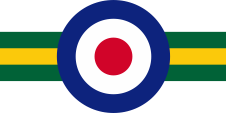 |
1939–1954, Flugzeugkokarde – aircraft roundel Quelle/Source, nach/by: Wikipedia (EN) |
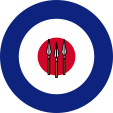 |
1954–1963, Flugzeugkokarde – aircraft roundel Quelle/Source, nach/by: Wikipedia (EN) |
 |
1963–1970, Flugzeugkokarde – aircraft roundel Quelle/Source, nach/by: Wikipedia (EN) |
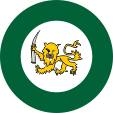 |
1970–1980, Flugzeugkokarde – aircraft roundel Quelle/Source, nach/by: Wikipedia (EN) |
 |
seit/since 1980, Flugzeugkokarde – aircraft roundel Quelle/Source, nach/by: Wikipedia (EN) |
Landkarte – Map: |
Lage – Position: |
Landkarte des Landes – Map of the Country: |
|
|
| Zahlen und Fakten – Numbers and Facts: | |
|
|
|
|
|
|
|
|
|
|
|
|
|
|
|
|
|
|
|
|
|
Mittelalter · Besiedlung durch aus Norden einwandernde Bantu
(Ndebele und Shona) 1100 · Entstehung der Stadt Simbabwe mit den legendären Steinbauten 14.–15. Jahrhundert · zum Bantu Königreich Monomotapa 1837 · Entstehung eines Matabele-Königreichs, Krieg gegen die Mashona Februar 1888 · das Königreich der Matabele wird als "Matabeleland" Protektorat der Britischen Südafrika-Gesellschaft (BSAC) Oktober 1888 · die Briten nennen das Land "Sambesia" 1889 · das Gebiet der Mashona wird als "Mashonaland" Protektorat der Britischen Südafrika-Gesellschaft (BSAC) 1893 · Matabeleaufstand 1894 · Matabeleland und Mashonaland werden zu "Südsambesia" zusammengefasst 1895 · Südsambesia und Nordsambesia (das heutige Sambia) werden zum Protektorat "Rhodesien" vereinigt, Zuzug von europäischen Siedlern 1896–1897 · Matabele- und Mashonaaufstand 01.10.1923 · Südrhodesien wird britische Kronkolonie mit eingeschränkter Selbstverwaltung durch die Europäischen Siedler 01.08.1953 · Nordrhodesien, Südrhodesien und Njassaland werden zur "Föderation Rhodesien und Njassaland" zusammengefasst (auch Zentralafrikanische Föderation), das von Europäern beherrschte Südrhodesien dominierte in den Folgejahren die Föderation, wogegen sich in Nordrhodesien zunehmend Widerstand formierte 1960 · Gründung des ANC (African National Council), sofortiges Verbot 1961 · Gründung der Matabele-ZAPU-Partei (Zimbabwe African People's Union) 1963 · Gründung der Mashona-ZANU-Partei (Zimbabwe African National Union) 31.12.1963 · Nordrhodesien tritt aus der Zentralafrikanischen Föderation aus, Auflösung der Föderation 24.10.1964 · Nordrhodesien wird als "Republik Sambia" unabhängig 11.11.1965 · Südrhodesien erklärt als "Rhodesien" seine Unabhängigkeit von Großbritannien (international nicht anerkannt), die UNO beschließt einen Boykott Rhodesiens, Verhängung des Ausnahmezustands 1966 · ZANU und ZAPU beginnen mit dem bewaffneten Kampf 02.03.1970 · neue Verfassung, Rhodesien verlässt den Commonwealth of Nations und wird Republik 1976 · ZANU und ZAPU arbeiten in der Patriotic Front zusammen 1979 · neue Verfassung, allgemeines und gleiches Wahlrecht (mit Sonderrechten für die Weißen), Wahlen 01.06.1979 · Proklamation der Republik Simbabwe-Rhodesien unter Premierminister Abel Muzorewa (international nicht anerkannt) 10.–21.12.1979 · Simbabwe-Konferenz in London, Lancasterhouse-Abkommen, Verhandlungen zwischen Simbabwe-Rhodesien, Großbritannien und der Patriotic Front über Waffenstillstand, Verfassung und Wahlen 12.12.1979 · Simbabwe-Rhodesien wird für einen Übergangszeitraum wieder britische Kolonie 17.04.1980 · Unabhängigkeit, Proklamation der Republik Simbabwe 1987 · Verfassungsänderung, die für Weiße reservierten Sitze im Parlament werden abgeschafft, Vereinigung der Parteien ZANU und ZAPU zur ZANU-PF, Wahl von Robert Mugabe zum Staatspräsidenten, Einführung des Ein-Parteien-Systems 25.07.1990 · Ende des Ausnahmezustands 1991 · Wirtschaftsreformen, tiefe soziale Krise 1992 · beginnende Enteigungen der weißen Einwohner 1992 · Gründung der Oppositionspartei "United Front" 1993 · Korruptionsskandal in der Regierung 1997 · Enteignung von 1734 Farmen weißer Einwohner, 4,6 Millionen Hektar Ackerland werden aufgeteilt, Rückgang der landwirtschaftlichen Produktion, Versorgungskrise 2000 · Präsident Mugabe erklärt die weißen Simbabwer zu Staatsfeinden, hunderte von Farmen weißer Einwohner werden belagert und niedergebrannt, die Farmer interniert und teilweise gelyncht, das Land wird aufgeteilt 2001 · weiterer Rückgang der landwirtschaftlichen Produktion, Hunger 2002 · Simbabwe bittet bei der UNO um Lebensmittelhilfe 2007 · die letzten 500 weißen Farmer werden aufgefordert das Land zu verlassen 2014 · Präsident Mugabe erklärt, dass Weiße in Simbabwe kein Land besitzen dürfen 2015 · Präsident Mugabe lässt bei den vertriebenen weißen Farmern anfragen, ob sie nicht zurückkommen wollen 2016 · Simbabwe verlangt 1,5 Milliarden US-Dollar an Lebensmittelhilfe um eine Hungerkatastrophe zu verhindern 2017 · Simbabwe bittet die weißen Farmer zurück ins Land 14.11.2017 · Militärputsch, Mugabe tritt nach einem Amtsenthebungsverfahren am 21.11. zurück 2018 · der neue Präsident Mnangagwa erklärt, dass Simbabwe ohne die weißen Farmer verloren ist 2019 · Simbabwe zahlt zurückkehrenden weißen Farmern eine Entschädigung |
|
Middle Ages · settlement by from the north immigrating Bantu tribes
(Ndebele and Shona) 1100 · nascence of the city of Simbabwe with the legendary stone buildings 14th–15th century · to the Bantu Kingdom of Monomotapa 1837 · nascence of an Matabele-Kingdom, war against the Mashona February 1888 · the Kingdom of the Matabele becomes as "Matabeleland" a protectorate of the British South Africa Company (BSAC) Oktober 1888 · the British name the country "Zambesia" 1889 · the territory of the Mashona becomes as "Mashonaland" a protectorate of the British South Africa Company (BSAC) 1893 · Matabele revolt 1894 · Matabeleland and Mashonaland become summarized to "South Zambesia" 1895 · South Zambesia and North Zambesia (the today’s Zambia) become united to the Protectorate of "Rhodesia", immigration of european settlers 1896–1897 · Matabele- and Mashona revolt 1st of October 1923 · Southern Rhodesia becomes a British crown colony with limited self administration by the european settlers 1st of August 1953 · Northern Rhodesia, Southern Rhodesia and Nyasaland become merged to the "Federation of Rhodesia and Nyasaland" (also named Central African Federation), the by Europeans ruled Southern Rhodesia dominated in the afteryears the federation, against that arises waxing resistance in Northern Rhodesia 1960 · establishment of the ANC (African National Council), immediate interdiction 1961 · establishment of the Matabele-ZAPU-Party (Zimbabwe African People's Union) 1963 · establishment of the Mashona-ZANU-Party (Zimbabwe African National Union) 31st of December 1963 · Northern Rhodesia leaves the Central African Federation, dissolution of the federation 24th of October 1964 · Northern Rhodesia becomes independent as "Republic of Zambia" 11th of November 1965 · Southern Rhodesia declares as "Rhodesia" its independence from United Kingdom (internationally not recognized), the UNO decided to boycott Rhodesia, infliction of the state of emergency 1966 · ZANU and ZAPU start the armed struggle 2nd of March 1970 · new constitution, Rhodesia leaves the Commonwealth of Nations and becomes a republic 1976 · ZANU and ZAPU operate together in the Patriotic Front 1979 · new constitution, common and equal suffrage (with special rights for the whites), elections 1st of June 1979 · proclamation of the Republic of Zimbabwe-Rhodesia under Premier Abel Muzorewa (internationally not recognized) 10th to 21st of December 1979 · Zimbabwe-Conference in London, Lancasterhouse Agreement, negotiations between Zimbabwe-Rhodesia, United Kingdom and the Patriotic Front about cease fire, constitution and elections 12th of December 1979 · Zimbabwe-Rhodesia becomes for a momentarily period of time a British colony again 17th of April 1980 · independence, proclamation of the Republic of Zimbabwe 1987 · change of constitution, the fo whites reserved seats in the parliament become abolished, unification of the parties ZANU and ZAPU to the ZANU-PF-Party, election of Robert Mugabe to president, introduction of the single-party-system 25th of July 1990 · end of the state of emergency 1991 · economical reforms, deep social crisis 1992 · start of the expropriation of the white inhabitants 1992 · establishment of the opposition party "United Front" 1993 · corruption scandal in the government 1997 · expropriation of 1734 farms of white inhabitants, 4,6 millions hectare of arable land become divided, decline of the agricultural production, supply crisis 2000 · President Mugabe declares the white Zimbabweans to state enemies, hundreds of farms of white inhabitants become besieged and burned down, the farmers become interned and partially lynched, the land becomes divided 2001 · further decline of the agricultural production, hunger 2002 · Zimbabwe begs the UNO for food-help 2007 · the last 500 white farmers are asked to leave the country 2014 · President Mugabe declares that whites are not allowed to own land in Zimbabwe 2015 · President Mugabe sends out requests to evicted white farmers to come back 2016 · Zimbabwe asks for US$ 1.5 billion in food aid to prevent famine 2017 · Zimbabwe asks white farmers to come back to the country 14th of November in 2017 · Military coup, Mugabe resigns after impeachment trial on 21st of November 2018 · new president Mnangagwa declares Zimbabwe is lost without the white Farmers 2019 · Zimbabwe pays compensation to returning white farmers |
| Quelle/Source: Atlas zur Geschichte, Wikipedia (EN), World Statesmen, reddit.com |
| Der Landesname "Simbabwe" bezieht sich auf die 20 km südöstlich von Fort Victoria gelegene legendäre Ruinenstadt. Ihr Name wurde ihr von den Matabele-Bantus gegeben. Er bedeutet "Häuser aus Stein" | The name of the country "Zimbabwe" derives from the about 12,5 miles southeastern of Fort Victoria situated legendary ruin-city. Its name was given by the Matabele Bantu. It means "houses made of stone". |
| Der Landesname "Rhodesien" bzw. "Südrhodesien" bezieht sich auf den britischen Kolonialpolitiker Cecil John Rhodes (1853–1902) den Gründer und Förderer des Landes | The former name "Rhodesia" resp. "Southern Rhodesia" has its roots in the British colonial politician Cecil John Rhodes (1853–1902) the founder and sponsor of the country. |
| Quelle/Source: Atlas der wahren Namen, Volker Preuß | |